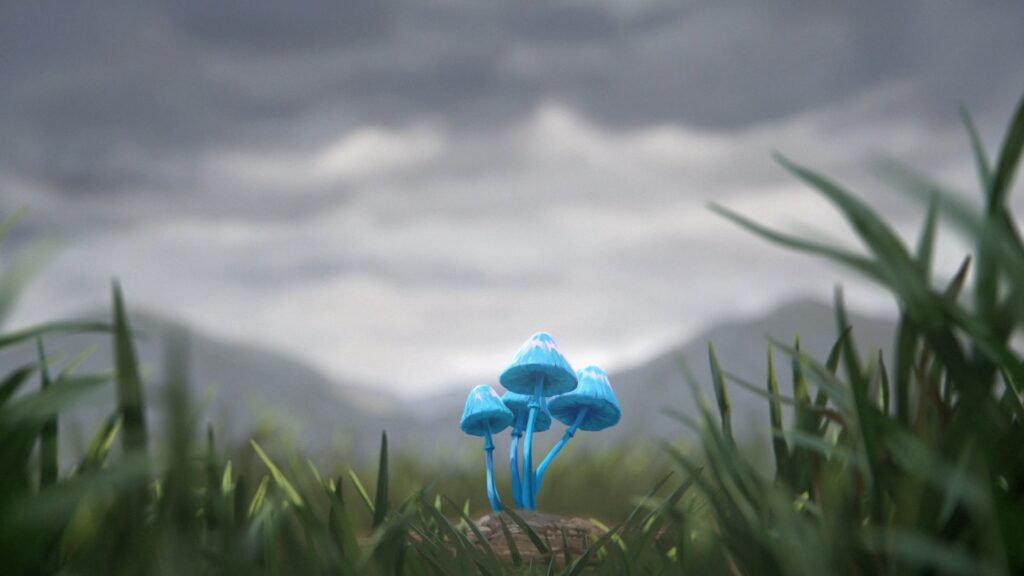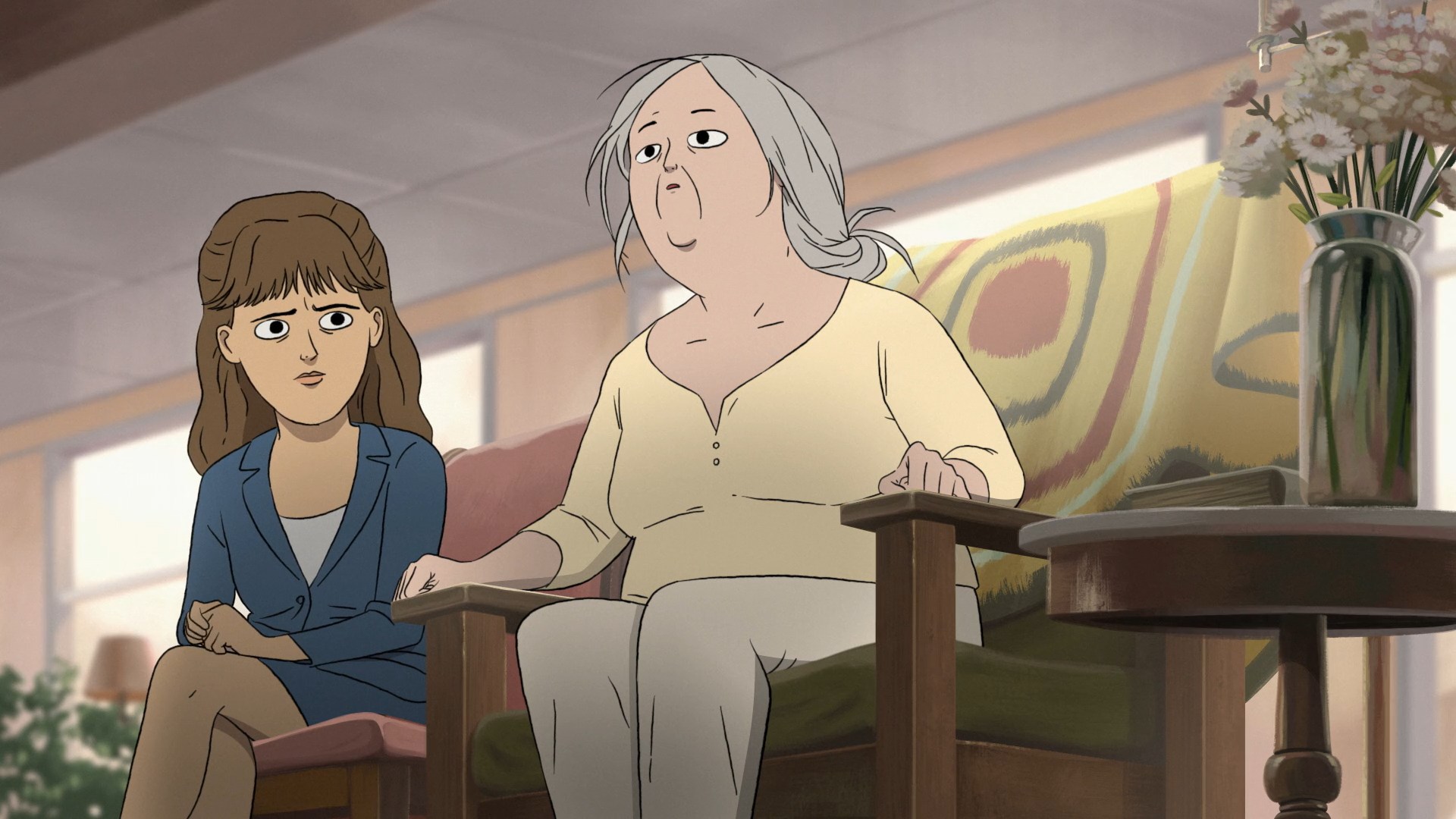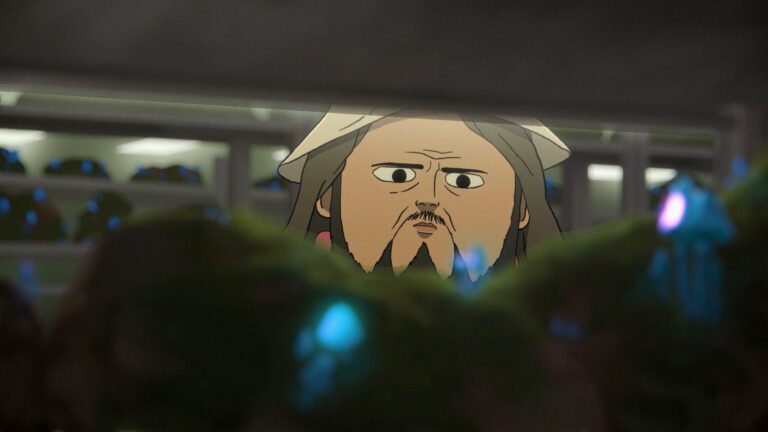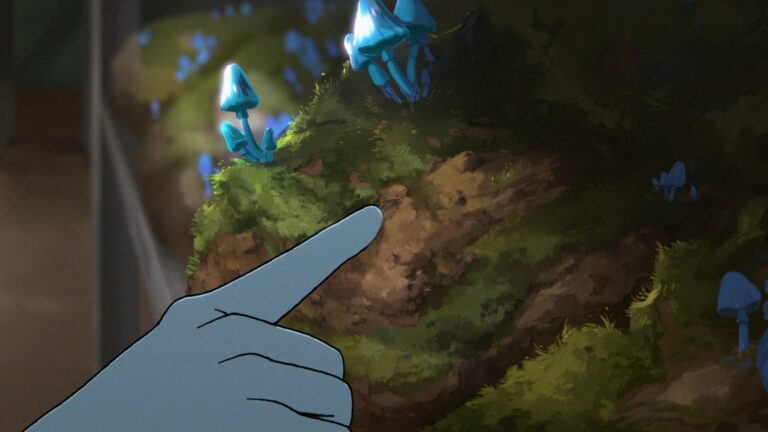Picture that first shiver running down your spine in the “Blue Angel” scene. You know the moment. The bizarre, almost aquatic glow, Marshall’s mushroom doing its glacial time-lapse thing — and then that voice. It doesn’t just sing; it echoes, it ripples. The atmosphere thickens. And everything gets way, way more mysterious. Yep, you guessed it. That siren song comes from none other than experimental vocalist Odeya Nini, who stars right there on “Blue Angel (feat. Odeya Nini),” shaping the episode’s vibe in a way no ordinary singer ever could.
So Who Is Odeya Nini Anyway?
Let’s break it down. Odeya Nini isn’t your garden-variety vocalist. She’s LA-based, sure, but her trajectory zigzags all over the place. Born in the Bronx to Yemenite Jewish parents, she moved to Israel at sixteen. Imagine that culture shock! There, she dived headlong into the theater scene, studying at the Thelma Yellin High School of the Arts.
After she finished her stint in the Israeli military — talk about life experience — she shifted back to New York. Next, she snagged a BFA from The New School for Jazz and Contemporary Music. Oh, and she trained under jazz monsters like Theo Bleckmann and Gerry Hemingway. Pretty sweet mentors, right? She didn’t stop there though. Soon it was off to California, where she grabbed an MFA in composition from CalArts.
But academic creds are just one angle. If you’ve caught any of her performances — maybe at the LA Phil, or The Broad, or overseas in places like MONA — you know she unleashes sound in ways most folks haven’t even dreamed of.
The Blue Angel Theme: A Sonic Experiment
Now, let’s get to the real juice — her part in the “Blue Angel” theme.
If you were expecting a typical TV show theme song, think again. The creative minds behind the scene wanted something that didn’t just sit in the background. They wanted sound that transformed the space, that crawled straight under your skin. So they called up Nini, the queen of vocal oddities.
She didn’t just bring a melody. She brought the whole toolbox:
- Extended vocal techniques — howling, breathy whispers, eerie overtones.
- Movements and gestures baked right into sound.
- Vibrations that seemed to reach far beyond the TV speakers.
When you’re listening to “Blue Angel (feat. Odeya Nini),” you aren’t hearing a regular singer. You’re experiencing an instrument that happens to come in human form. The mystical, foggy shroud around Marshall’s mushroom owes almost everything to Nini’s voice.

Unpacking That Weird, Wonderful Singing Style
Let’s geek out for a second. What exactly does “experimental vocalist” mean here?
First, Odeya Nini loves to stretch the voice far past its comfort zone. She’s always exploring. For her, vocals aren’t just about singing notes. Instead, she treats her voice as a wild, physical medium. If she needs to, she’ll venture from ground-level growls all the way up to shrieking, bell-clear tones.
Now, when the “Blue Angel” theme pulses through your headphones, you hear those skills on full display. Nini never just belts out a tune — she constructs a world:
- Texture is everything. She stacks harmonies, then blends them until they shimmer.
- Silence matters as much as sound.
- She improvises, letting the atmosphere of the moment steer her choices.
In fact, she once described her process as having a roadmap, but leaving the structure open. That means each performance tweaks itself to the space, the crowd, even the exact second.
You end up with music that’s both strangely familiar and totally new. It’s like the soundtrack is breathing along with the scene.
A Bit of Culture, a Dash of Tradition
Now, Nini’s whole bag of tricks isn’t just random. A lot grows right out of her roots. Her Yemenite Jewish heritage carved a path for her, especially the female wailing tradition — picture women singing grief into the air, helping the whole community to process loss.
So it’s not just about the technicalities. For Nini, the voice carries healing power. It’s emotion turned into sound. That feeling — grief, hope, excitement — filters straight into her “Blue Angel” work. And you, lucky viewer, get to soak it all in, whether you realize it or not.
Inside Odeya’s Sonic Workshop
Still with me? Because you’re about to find out that Nini’s world is even broader than just “Blue Angel.”
She has released albums like:
- Vougheauxyice (Voice) (2014) — her debut odyssey into voice-morphing sound.
- Voice Bath (2021) — where she builds sonic environments meant to restore, not just impress.
- ODE (2022) — got a nod from The New Yorker as a must-hear release.
But she’s not only about production and stages. She runs vocal sound baths. These aren’t your mom’s spa treatments. Nini invites folks to lie back and let soundwaves snake through them, dissolving stress and, maybe, a little sadness, too.
And if you’re the workshop type, she’ll teach you how to tap into your own voice’s power. She’s led retreats and sessions all over the globe, from Madagascar to Vietnam to, naturally, LA. So, if you ever wanted to screech or chant freely and not get strange looks, she’s your guru.
Was It Weird Enough? Social Buzz and Critical Applause
Let’s come up for air and check the buzz. Critics and fans haven’t missed Odeya Nini in “Blue Angel.” On social media, people couldn’t figure out at first if they heard a human or some high-tech synth. On Common Side Effects fan threads, the word “otherworldly” kept popping up. Honestly, “haunting” might undersell it. Some called her vocals a perfect match for the scene’s surreal botanical mood.
Meanwhile, The New Yorker and I Care If You Listen praised her recent work for its wild dynamic swings and ability to make the familiar seem fantastical. Reviewers swooned over her range — from whispers to grand, room-filling resonance.
Also, musicians noticed. The Grammy-nominated ensemble Wild Up featured her among their quirky, boundary-shoving ranks. Collaborators love her ability to bring both technical muscle and raw emotion to any project.
The Magic Behind Marshall’s Mushroom
Back to the theme itself. What makes this particular pairing of sound and scene work? First, you’ve got the visuals: the mushroom, so strange and blue, almost alive. Add Nini’s voice, and suddenly, the fungus isn’t just a set prop. It’s a character. Her vocals swirl, bend, and move, giving the mushroom a mystical halo. You don’t just see Marshall’s fascination — you feel it. Especially as her haunting timbre ticks up just as the spores puff or the lighting shifts.
Let’s be honest. Not many vocalists could have pulled off that effect. The soundscape needed someone who understood how to use silence, motion, and breath as much as pitch or words. Nini brought all of that and then some. She turned an already trippy moment into something you can’t easily forget.

Want More Odeya? Here’s Where to Start
Ready to dive deeper? You don’t have to just replay that Blue Angel theme on loop (though it’s tempting). Here’s how to truly wade into Nini’s world:
- Check out her solo records, starting with Vougheauxyice (Voice) for her experimental roots.
- Spin ODE if you want a blend of classic and futuristic vocal invention.
- If you get the chance, hit up one of her live performances, especially her sound baths. They’re wild, immersive, and even a little weird — in the best way.
- Dig up interviews on 15questions.net or features by I Care If You Listen for a behind-the-scenes peek at her process.
Finally, don’t be shocked if you suddenly want to howl along. Odeya Nini’s music has a way of tugging the performer out of all of us.
Let’s Call This a Coda, Not an Exit
By now, you probably won’t hear “Blue Angel (feat. Odeya Nini)” the same way again. Next time Marshall’s mushroom scene rolls around, you’ll know whose vocal incantations are conjuring up that thick, blue fog. It’s Nini bending sound, memory, tradition, and pure experimental guts into a song that haunts your ear long after the credits.
Maybe that’s the whole point — art this original lets you see (and hear!) your favorite show from a brand-new angle. Here’s hoping TV producers call up Nini even more in the future. Because let’s be honest: we could all use a little more magic stitched into our soundtracks.




